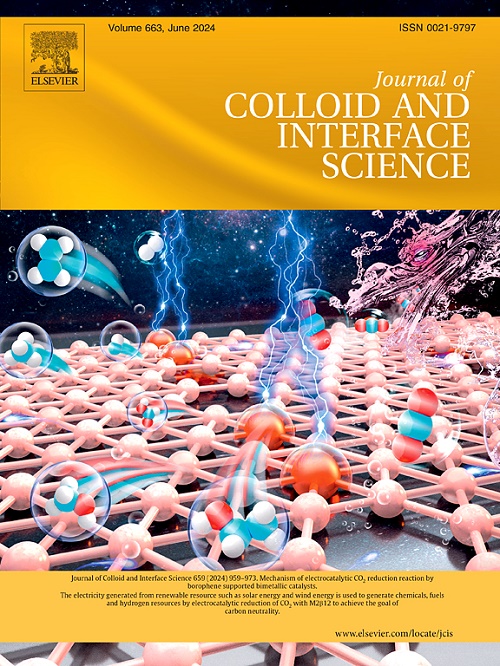有序宏微孔结构钴单原子催化剂作为锂硫电池的隔膜。
IF 9.7
1区 化学
Q1 CHEMISTRY, PHYSICAL
引用次数: 0
摘要
锂硫电池(li -硫电池)因其理论能量密度高、成本低、环境友好等优点而备受关注,被认为是下一代储能设备最有前途的候选者之一。然而,硫氧化还原反应的缓慢动力学和多硫化锂(LiPSs)造成的有害穿梭效应显著影响了锂硫电池的电化学性能。本文设计了具有有序宏微孔结构的Co单原子催化剂(CoSAC-NC),并将其涂覆在2325分离器上。CoSAC-NC有序的微孔结构增强了与LiPSs的相互作用,为LiPSs提供了储集层。其次,高暴露的Co-Nx结构活性位点可以有效地锚定LiPSs并促进其快速转化。这项工作显著提高了阴极的利用效率,在1℃下,在1000次循环中,每循环的容量衰减率非常低,仅为0.043%。本文章由计算机程序翻译,如有差异,请以英文原文为准。

Co single-atom catalyst on ordered macro–microporous structure as separator for Li-S battery
Lithium-sulfur (Li-S) batteries have attracted significant attention due to their high theoretical energy density, low cost and environmental friendliness, which are considered one of the most promising candidates for next-generation energy storage devices. However, the sluggish kinetics associated with sulfur oxidation–reduction reactions and the detrimental shuttle effect caused by lithium polysulfides (LiPSs) significantly impacts the electrochemical performance of Li-S batteries. In this work, Co single-atom catalyst (CoSAC-NC) on an ordered macro-microporous structure are designed, and the catalyst are coated onto 2325 separator. The ordered micro-microporous structure of CoSAC-NC enhances the interaction with LiPSs and provide reservoir for LiPSs. Secondly, the highly exposed Co-Nx configuration active sites can effectively anchor LiPSs and promotes their rapid conversion. This work significantly improves the utilization efficiency of the cathode, resulting in an exceptionally low-capacity decay rate of just 0.043 % per cycle over 1000 cycles at 1 C.
求助全文
通过发布文献求助,成功后即可免费获取论文全文。
去求助
来源期刊
CiteScore
16.10
自引率
7.10%
发文量
2568
审稿时长
2 months
期刊介绍:
The Journal of Colloid and Interface Science publishes original research findings on the fundamental principles of colloid and interface science, as well as innovative applications in various fields. The criteria for publication include impact, quality, novelty, and originality.
Emphasis:
The journal emphasizes fundamental scientific innovation within the following categories:
A.Colloidal Materials and Nanomaterials
B.Soft Colloidal and Self-Assembly Systems
C.Adsorption, Catalysis, and Electrochemistry
D.Interfacial Processes, Capillarity, and Wetting
E.Biomaterials and Nanomedicine
F.Energy Conversion and Storage, and Environmental Technologies

 求助内容:
求助内容: 应助结果提醒方式:
应助结果提醒方式:


